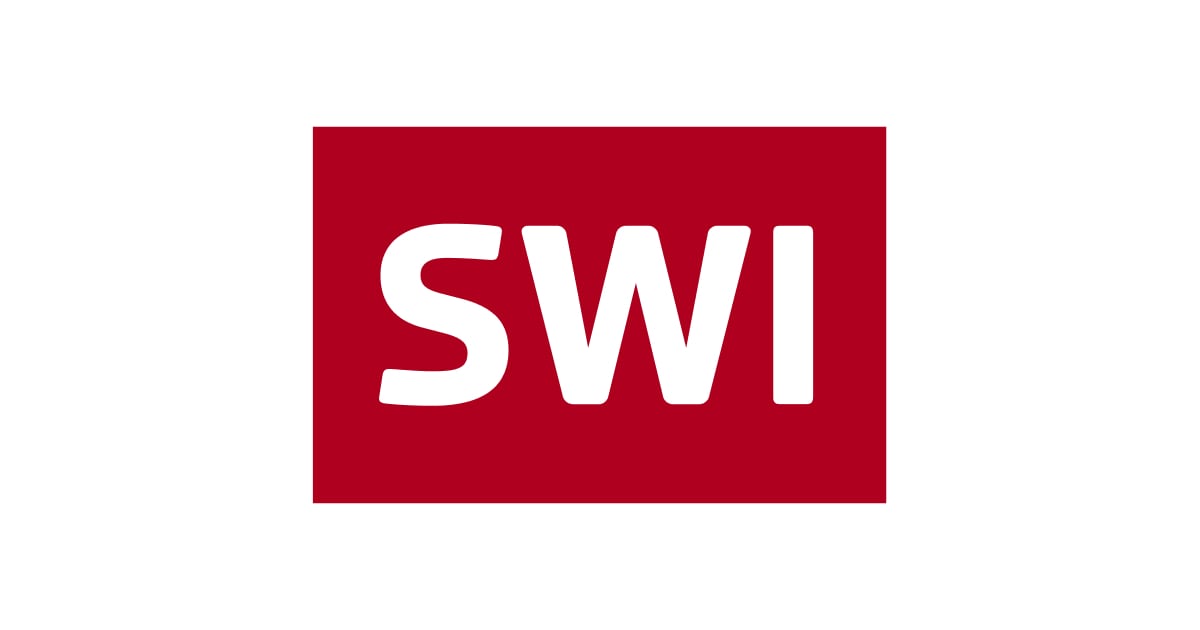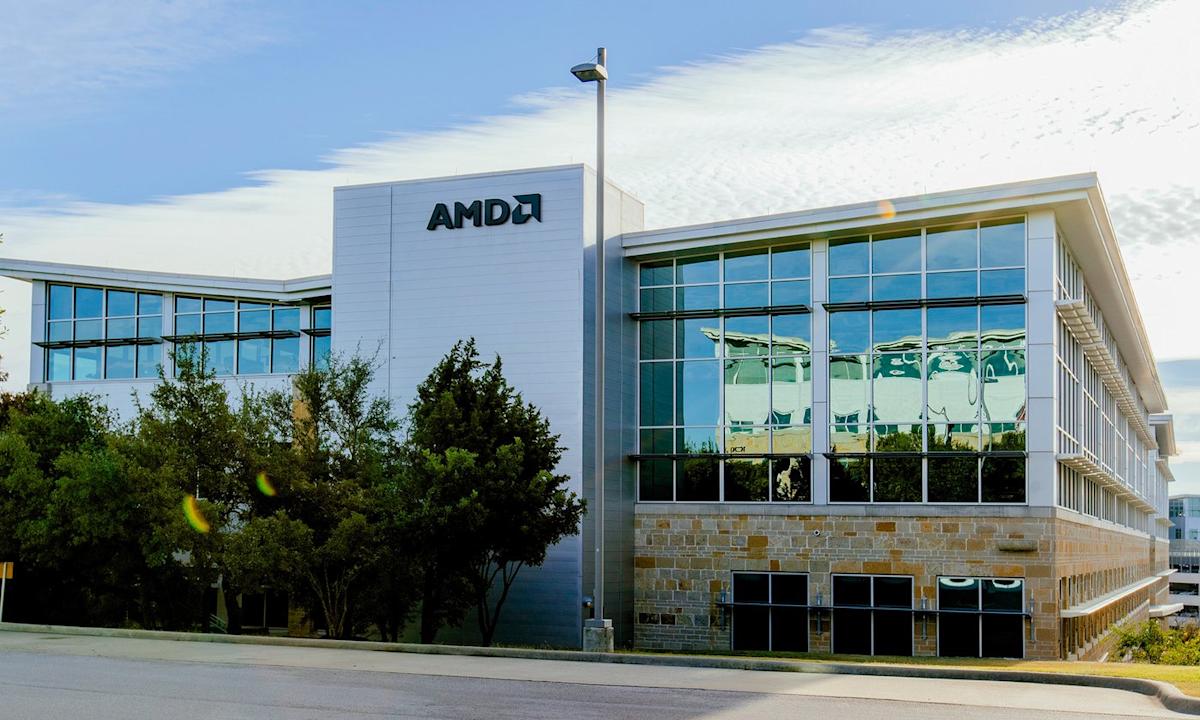Dancing with Ghosts follows the story of Mai, a 15-year-old Thai girl who is dealing with heavy emotions after the death of her parents. Through the grief, she finds it hard to find the joy in life until she learns to love it again…
Blog
-

World Menopause Day: support women, strengthen systems
Menopause has long been treated as a quiet, private ordeal. That silence carries a cost. On World Menopause Day, bringing menopause out of the shadows is not a niche concern but a public priority with tangible dividends for health, equity, and…
Continue Reading
-

Tiragolumab Plus Atezolizumab Fails to Improve Outcomes as Consolidation in NSCLC | Targeted Oncology
Consolidation therapy with tiragolumab plus atezolizumab (Tecentriq) failed to meet the primary end point of improving independent review facility (IRF)-assessed progression-free survival (PFS) vs standard durvalumab (Imfinzi) in patients with locally advanced, unresectable, stage III non–small cell lung cancer (NSCLC) that has not progressed after platinum-based concurrent chemoradiation (cCRT), according to findings from the phase 3 SKYSCRAPER-03 trial presented at the 2025 ESMO Congress.1
At a median follow-up of 30.7 months, the median IRF-PFS in the overall population was 14.2 month (95% CI, 12.6-19.2) in patients receiving the combination vs 13.8 months (95% CI, 10.9-17.0) in patients treated with durvalumab (HR, 1.00; 95% CI, 0.84-1.19). The 24-month PFS event-free rates were 39.0% and 38.5%, respectively. The median overall survival (OS) was 45.6 months (95% CI, 37.1–not evaluable [NE]) vs 45.8 months (95% CI, 36.9-NE), respectively (HR, 0.98; 95% CI, 0.80-1.20). The 24-month OS event-free rates were 67.0% vs 66.3%, respectively.
The primary end point was also missed in PD-L1–positive patients (Tumor Cell [TC] score ≥1%) with a median IRF-PFS of 19.4 months vs 16.6 months in patients treated with the combination vs durvalumab, respectively (HR, 0.96; 95% CI, 0.75-1.23; P = .7586). The median OS in these patients was NE vs 54.8 months, respectively (HR, 0.99; 95% CI, 0.73-1.34). The 24-month PFS and OS event-free survival rates were 46.1% vs 42.9% and 72.2% vs 69.2%, respectively.
“SKYSCRAPER-03 did not meet its primary end point of IRF-PFS. There were no new or unexpected [safety] findings,” said first study author Rafal Dziadziuszko, MD, PhD, department of oncology and radiotherapy of the Medical University of Gdansk, Poland.
What Was the Safety Profile of the Combination and Monotherapy Arms in the SKYSCRAPER-03 trial?
“Tiragolumab plus atezolizumab demonstrated a tolerable safety profile, consistent with previous observations for the combination,” said Dziadziuszko.
Grade 3/4 treatment-related adverse events (TRAEs) occurred in 13.8% of patients in the combination arm, with serious TRAEs experienced by 11.5%. There were 2 patient deaths considered to be related to the combination treatment. In the durvalumab arm, grade 3/4 TRAEs and serious TRAEs each occurred in 10.7% of patients. There were 7 patient deaths considered to be related to durvalumab treatment.
What Was the Study Rationale and Design for the SKYSCRAPER-03 trial?
Regarding the rationale for the study, Dziadziuszko explained, “Consolidation durvalumab is the standard of care for patients with unresectable, stage III NSCLC that has not progressed following cCRT; however, disease recurrence [still] represents an unmet need.”
He added that the immune checkpoint target TIGIT has a role in cancer immune evasion and the study hypothesis was that tiragolumab, an anti-TIGIT monoclonal antibody, could potentially augment antitumor activity when used in combination with immunotherapies such atezolizumab.
The open-label phase 3 SKYSCRAPER-03 trial was launched to test this hypothesis in patients with newly diagnosed, unresectable, stage III NSCLC whose disease has not progressed following at least 2 cycles of definitive platinum-based cCRT. Patients had to have known PD-L1 status, and an ECOG performance status of 0 or 1. Patients with EGFR– or ALK-positive tumors were not eligible for enrollment.
At 1 to 42 days post cCRT, patients were randomized in a 1 to 1 ratio to combination therapy with tiragolumab (840 mg IV every 4 weeks) plus atezolizumab (1680 mg IV every 4 weeks) or single-agent durvalumab (10 mg/kg IV every 2 weeks or 1500 mg IV every 4 weeks). Patient could receive up to 13 cycles of treatment (28-day cycles).
The primary end point was PFS assessed by an independent review facility in patients with PD-L1–positive (Tumor Cell [TC] score ≥1%) as well as PD-L1 all-comers. Secondary end points included OS, duration of response, objective response rate, patient-reported outcomes, and safety.
What Were the Patient Characteristics in the SKYSCRAPER-03 trial?
Patient characteristics were well balanced between the 2 study arms. The median age was 64 years (range, 35-84) in the combination arm vs 65 years (range, 41-86) in the durvalumab arm. About half of patients in each arm were aged less than 65 years at 50.8% and 47.4%, respectively. About 80% of patients in each arm were male, about 60% were White, and about 35% were Asian. Patients’ ECOG performance status was mostly split evenly between 0 and 1, with a slightly higher number of patients in each arm at ECOG 1 status. About 75% of patients in each arm were former tobacco users and about 20% were current tobacco users.
About 50% of patients in each arm had a PD-L1 TC score of <1%, with about 25% of patients having a score of 1%-49%, and the remaining patients having a score of ≥50%. Tumor staging prior to definitive cCRT showed that 41.1% of patients receiving the combination had stage IIIA tumors vs 39.6% of patients in the single-agent arm. Rates of stage IIIB and stage IIIC tumors were 47.4% vs 44.4% and 11.4% vs 16.0%, respectively. About 60% of patients in each arm had squamous histology and about 40% had non-squamous histology. Best response to concurrent chemoradiotherapy in the combination vs durvalumab arms was complete response (0.5% in each arm), partial response (59.7% vs 61.4%), and stable disease (39.8% vs 38.1%).
In his concluding remarks, Dziadziuszko did not report any next steps for the combination of tiragolumab plus atezolizumab in this setting.
Disclosures
Dziadziuszko disclosed relationships with AstraZeneca, Boehringer Ingelheim, BMS, Pfizer, Takeda, Eli Lilly, BioNTech, Novartis, and Roche.
Reference
1. Dziadziuszko R, Ahn M-J, Bradley JD, et al. SKYSCRAPER-03: Phase III, open-label, randomised study of atezolizumab (atezo) + tiragolumab (tira) vs durvalumab (durva) in locally advanced, unresectable, stage III non-small cell lung cancer (NSCLC) after platinum-based concurrent chemoradiation (cCRT). Presented at: 2025 ESMO Congress; October 17-21, 2025; Berlin, Germany. Abstract LBA69.
Continue Reading
-

‘All the good work from yesterday in the bin’ – Nico Hulkenberg laments Turn 1 collision that forced both McLarens out of US GP Sprint
“Big frustration,” said Hulkenberg reflecting on that moment. “All the good work from yesterday was put in the bin. We lost another front wing, which is also very annoying.”
Although Hulkenberg was able to continue following a pit stop…
Continue Reading
-

Final report from the audit of the HIV PrEP standards of care
ECDC, in collaboration with EACS (the European AIDS Clinical Society), is developing modules of HIV care standards to improve service access and quality. The pre-exposure prophylaxis (PrEP) Standards of Care module was among the first developed….
Continue Reading
-

Chinese Export Boom Can’t Stop Economy’s Slowdown
(Bloomberg) — China’s economy probably grew at the slowest in a year during the third quarter despite a boom in exports, in a disconnect the Communist Party may move to rectify at a key meeting in the coming week.
As trade tensions escalate with the US, weakness in investment, industrial output and retail sales is undermining momentum from record sales abroad. Data due on Monday from China’s National Bureau of Statistics will show gross domestic product rose 4.7% in the quarter from a year earlier, according to the median estimate in a Bloomberg survey, down from 5.2% in the prior three months.
Retail sales are forecast to have expanded 3% in September and industrial output to have climbed by 5% — the weakest outcomes this year for both.
Meanwhile, fixed-asset investment is forecast to have slowed again in the first nine months, to be unchanged from a year earlier. It’s been plunging since May despite a massive expansion in government borrowing meant to support the spending power of local authorities. Public spending on infrastructure hasn’t been enough, though, to make up for a slump in housing investment and the slowdown in money going to manufacturing.
Foreign firms have also been pulling back on outlays, with inbound new foreign direct investment down almost 13% in the first eight months, putting China on track for three straight years of declines. One bright spot is foreign demand, with the goods trade balance so far this year hitting a record $875 billion, according to the latest figures.
The economic fragility sets the tone for the upcoming gathering of party officials at the so-called fourth plenum in Beijing. The huddle will provide clues on their priorities for 2026-2030, as governments and investors around the world call for a rebalancing of China’s economy toward domestic consumption.
What Bloomberg Economics Says:
“Beijing now faces deep structural headwinds — from fading growth drivers to a protracted property downturn and entrenched deflation — unlike the severe, yet temporary pandemic shocks during the last five-year planning stage. With the US ratcheting up trade and tech restrictions, the external environment has also turned sharply adverse. This time, the transition is no longer a distant goal — it’s imperative.”
—Chang Shu, chief Asia economist. For full analysis, click here
The IMF, which just kept its prediction for China’s 2025 growth at 4.8%, expects a slowdown next year to 4.2% — an outlook in line with the median forecasts of economists surveyed by Bloomberg. The fund warned that “China’s prospects remain weak,” saying “real estate investment continues to shrink while the economy teeters on the verge of a debt-deflation cycle.”
“Rebalancing toward household consumption — including through fiscal measures with a greater focus on social spending and the property sector — and scaling back industrial policies would reduce external surpluses and alleviate domestic deflationary pressures,” the IMF officials said in their global economic outlook.
Elsewhere, inflation data from Japan to the UK, purchasing manager indexes from major economies, and the first summary of a meeting by Swiss central bank officials will be among the highlights.
Click here for what happened in the past week, and below is our wrap of what’s coming up in the global economy.
US and Canada
After being delayed by the US government shutdown, the Bureau of Labor Statistics will release of the September consumer price index on Friday. The data, originally slated for Oct. 15, will give Federal Reserve officials a critical piece of information on inflation ahead of their policy meeting the following week.
Economists in a Bloomberg survey forecast the core CPI, which excludes food and fuel for a better snapshot of underlying inflation, to have climbed 0.3% for a third straight month as higher import duties continue to gradually filter through to consumers. The projected monthly gain will keep the annual core CPI at 3.1%.
While most official economic data releases have been delayed, BLS staff were called in despite the shutdown to prepare the September CPI report, which informs next year’s cost-of-living adjustments for Social Security recipients.
Although inflation is stuck above their goal, Fed officials are expected to announce their second rate cut of the year following a two-day meeting on Oct. 28-29 because of the fragile labor market.
Among private-sector economic data on the agenda, a National Association of Realtors report on Thursday will probably show contract closings on purchases of previously owned homes stayed tepid in September. An S&P Global PMI release on Friday is projected to illustrate modest growth in manufacturing and services activity.
For more, read Bloomberg Economics’ full Week Ahead for the US Asia
Apart from the busy week in China, Japan reports national CPI figures on Friday expected to show that consumer inflation remained well above the Bank of Japan’s target in September, while purchasing manager indexes the same day may show manufacturing activity shrinking for a fourth straight month, even as services marked a full year of expansion.
India’s September PMI figures will likely show manufacturing activity remains robust. New Zealand reports quarterly inflation data, while Malaysia, Singapore and Hong Kong release September CPI.
Monthly trade data are due from New Zealand, Thailand and Japan, while South Korea will release 20-day trade statistics for October.
On the policy front, China is likely to hold its 1- and 5-year loan prime rates steady on Monday. Bank Indonesia will mull another cut to its benchmark rate on Wednesday as it weighs benign inflation against the weakening rupiah.
A day later, the Bank of Korea is expected to hold its base rate steady at 2.50% while possibly foreshadowing a cut in November as inflation stays subdued and economic growth cools. Uzbekistan sets rate policy on Thursday.
For more, read Bloomberg Economics’ full Week Ahead for Asia Europe, Middle East, Africa
The week’s highlight may be the initial reading of October purchasing manager indexes across western Europe.
These will reveal how manufacturing and services companies in Germany, France and the UK assessed the activity at the start of the fourth quarter, pointing to any momentum — or lack thereof — at a time when President Donald Trump’s tariffs are squeezing exports to the US.
In terms of hard data, Britain may draw the most attention. Public finance numbers on Tuesday will inform Chancellor Rachel Reeves as she prepares for a fraught budget in November.
Inflation the following day will be crucial both for Reeve’s plans and the Bank of England, which is inching toward further rate cuts while nervously monitoring still-strong price pressures. The data are likely to show acceleration to 4%, the fastest in 1 1/2 years.
In the euro zone, several European Central Bank speakers will deliver remarks before a pre-decision quiet period kicks in on Thursday. Among them will be Executive Board members Isabel Schnabel and Philip Lane on Monday, and President Christine Lagarde on Wednesday.
Meanwhile, France’s ongoing struggles to pass a budget are likely to continue after Prime Minister Sebastien Lecornu survived two no-confidence votes in the past week. Political strife could yet force the collapse of his government.
The situtation was exacerbated by Friday night’s unscheduled move by S&P Global Ratings to downgrade the country. The move means France has lost its double-A rating at two of the three major credit assessors in little more than a month, potentially forcing some funds with ultra-strict investment criteria to sell the country’s bonds.
An update at Moody’s Ratings is due at the end of the coming week, though the firm currently has a stable outlook on the country.
Belgium is also on the calendar for a possible review from S&P Global Ratings, whose view on its credit score is already skewed negative.
In Switzerland on Tuesday, September export numbers will offer a glimpse into the country’s trade position at the end of a quarter when it got slapped with the highest US import tariffs of any advanced economy. The government cited those levies in cutting its growth forecast for next year.
Thursday will be a watershed moment for the Swiss National Bank with the release of its first-ever summary of a rate meeting discussion, in an attempt to emulate the sort of transparency practiced by the Fed.
Turning south, data on Wednesday will likely show South African inflation ticked up to 3.4% in September from 3.3%. That may again persuade policymakers to hold rates steady for a second consecutive meeting next month as they defend the South African Reserve Bank’s stricter 3% goal for price growth, which they signaled in July is their preferred level.
A day later, the central bank will publish its semi-annual monetary policy review and Governor Lesetja Kganyago will offer more insights.
For more, read Bloomberg Economics’ full Week Ahead for EMEA Some monetary decisions are scheduled around the region:
On Tuesday, the National Bank of Hungary is set to keep its rate on hold at 6.5%, having rebuffed government calls for easing. Turkey’s central bank is likely to lower rates again on Thursday — by 100 basis points to 39.5%, according to a Bloomberg survey. Still, some in the poll expect a hold after price growth unexpectedly picked up in September to 33.3% year-on-year. The Bank of Russia will announce its latest rate decision on Friday, after cuts at the past three meetings brought the benchmark to 17%. Governor Elvira Nabiullina has warned that the widening federal budget deficit, driven by spending on the war in Ukraine, may limit room for further cuts. Latin America
In a light week, Mexico may face a second straight month of negative GDP-proxy prints for August, due largely to more restricted public spending and Trump’s trade policies.
In similar vein, August data from Argentina may show activity extending a slump as President Javier Milei’s shock therapy weighs on the economy.
Also due from Argentina is Torcuato Di Tella University’s government confidence index, which is fresh off a tumble and may have taken another leg down amid a sell-off of the peso and local assets. Much is riding on how Milei fares in the Oct. 26 midterm elections.
Providing regional contrast material, Colombia’s August GDP-proxy report comes on the heels of July data that showed growth got off to a blistering start in the second half, in line with central bank forecasts.
Mid-month inflation reports from Brazil and Mexico are likely to show still-simmering price pressures.
Sticky and elevated core readings are likely to keep Brazil’s central bank on hold at 15% into 2026, though readings in Mexico are very unlikely to see Banxico pause its easing cycle after 10 straight rate cuts.
For more, read Bloomberg Economics’ full Week Ahead for Latin America –With assistance from Brian Fowler, Laura Dhillon Kane, Vince Golle, Monique Vanek, Robert Jameson, Mark Evans, Tony Halpin, Paul Abelsky and Paul Wallace.
©2025 Bloomberg L.P.
Continue Reading
-

Apple Now Has iPhone 15 Plus At Its Lowest Ever Price
Apple recently changed its system for which phones it withdraws from sale when. But if you are looking for an iPhone at a bargain price, you can now buy the iPhone 15 Plus direct from Apple at the lowest price the Apple Store refurbished section…
Continue Reading
-

Global AI Competition Could Create Trillion-Dollar Winners
Artificial intelligence (AI) represents a major opportunity for businesses across industries to develop products faster and cheaper than ever before. The race to gain a data-driven edge on the competition is fueling massive investment across the entire tech supply chain from data centers to software.
Many of the key players enabling this new industrial revolution are already valued at over $1 trillion market caps. But as governments and businesses continue to invest in this technology, there are two AI enablers that are still valued under $500 billion that could be worth buying today. Here’s why growing competition in AI could propel these companies into the trillion-dollar club.
Palantir (NASDAQ: PLTR) started as a government contractor, providing AI-powered software for intelligence and counterterrorism efforts. But now its software is experiencing insatiable demand in the private sector. Companies are seeing significant cost savings, which means Palantir can benefit from companies scrambling to adopt AI solutions to remain competitive.
If one company in an industry uses Palantir to gain operating efficiencies, it creates a competitive advantage. This pushes more businesses to consider investing in Palantir’s platforms or risk falling behind. This can explain in part why Palantir’s U.S. commercial revenue has exploded this year, nearly doubling year over year in the second quarter.
Palantir closed its highest quarter yet of total contract-value bookings of $2.3 billion, representing a year-over-year increase of 140%. It is signing bigger deals while also seeing existing customers continue to spend more, leading to a healthy 128% net-dollar retention rate.
Palantir is effectively a tool that improves a company’s profits. Its software is expensive relative to alternative software vendors, but Palantir still expects accelerating growth next quarter. This signals it has a competitive edge. Palantir’s ontology-based system creates a digital twin of a company’s operations, helping managers make sense of unorganized data for better decision making.
Importantly, Palantir is converting revenue into very high margins that are driving robust growth in earnings and free cash flow. This is one reason why the stock has performed so well and may continue to outperform Wall Street’s expectations.
Continue Reading
-

Bit-banged 100 MBit/s Ethernet Transmission On Raspberry Pi Pico
The Raspberry Pi Pico is a very capable board, but it’s still a surprise to see bit-banged 100 MBit/s Fast Ethernet implemented on one. [Steve]’s Pico-100BASE-TX library allows an RP2040 (or RP2350) microcontroller to…
Continue Reading
-

Orionids to peak Monday night with as many as 20 meteors per hour
The Witch Head Nebula, pictured in October 2008, is in the constellation Orion, from which the Orionids get their name. The Orionids will reach their annual peak Monday and Tueday. File Photo courtesy of NASA | License PhotoThe night sky will…
Continue Reading
